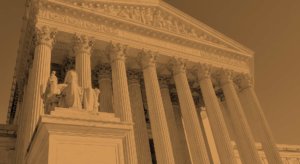Watch video interview of Attorney Michael Louis on SmallBizSpotlight radio show with Bipin Chandriani, Podcaster & Host of SmallBizSpotlight Show and Realtor®- Guiding home owners sell/buy stress free and get the best value for the home owner and invest in Real Estate to create additional streams of income and build wealth.
News
Attorney Tiffany Shrenk Serves As Assistant Treasurer For The 2021-22 Junior League Of Wilmington Board Of Directors
MacElree Harvey is excited to announce the appointment of Partner Tiffany Shrenk as the Assistant Treasurer of the Junior League of Wilmington Board of Directors. The Junior League of Wilmington is a nonprofit volunteer organization founded in 1918. For over 100 years, the women of the Junior League of Wilmington have encouraged every member to use her talents and resources to improve the social and economic conditions of others.
Today, the League has over 300 members, making it a large nonprofit organization in Delaware. Continuing to focus on improving the health, education, and welfare of those in need, the Junior League of Wilmington serves as an important volunteer resource and a catalyst for positive change through their partnerships with other nonprofit organizations in the community.
From actively supporting a woman’s right to vote, creating a Foster Care Review Board to protect children’s rights, helping to build the Woodlawn Library, and participating in numerous projects with the Ronald McDonald House, the Junior League of Wilmington has been a force in Delaware. The Junior League of Wilmington spearheaded the passage of Erin’s Law in Delaware, requiring publicly funded schools to implement age-appropriate, prevention-oriented sexual abuse education, and most recently, through its “Stand Up. Period” initiative was instrumental in the passage of House Bill 20, requiring all public and charter schools with grades 6-12 to provide free feminine hygiene products. In December 2021, the Junior League of Wilmington was awarded the Governor’s Outstanding Volunteer Service Award for its commitment to raising awareness of period equity and working to ensure programs that provide period supplies.
Inspired by her desire to give back and support the Wilmington community, Tiffany joined the Junior League of Wilmington in 2021. Her first committee experience with the League was as a member of the Annual Funds and Grants Committee where she gained valuable experience working on her first grant application and learning more about fundraising for a non-profit organization.
“I joined the Junior League of Wilmington (JLW) in early 2021. I was first introduced to the JLW years ago when I attended their Kitchen Tour, and at the end of 2020, I was looking for an organization to join that would allow me to volunteer and fundraise to make an impact in the Wilmington community. I was impressed with JLW’s longstanding history and commitment to voluntarism,” said Tiffany.
“In addition to providing community service, JLW is dedicated to supporting women develop their leadership skills. I am excited to help make an impact in my community through my JLW Board participation, and I am enjoying getting to know other women with an interest in voluntarism and community service.”
Tiffany Shrenk practices personal injury and estate and trust litigation and has taken on pro bono cases for the Office of Child Advocate representing children in the foster care system.
To learn more about the Junior League of Wilmington’s past projects, partners and events, visit: jlwilmington.org/about. To donate, visit: jlwilmington.org/donate-now.
How do the new PA Support Guidelines Affect Your Support Order?
Amount of Support Obligation
On January 1, 2022, the support guidelines were amended. While a large amount of these changes involve cleaning up the language, here are some changes that are important to note. The biggest change however is that the Support Obligation is on average higher now than it was under the previous guidelines. The following three examples are for low, middle, and high combined incomes:
Under the old guidelines if the combined total monthly net income was approximately $2,000 and you have one child, the support obligation would be your portion of $475. Under the new guidelines for the same facts, the support obligation is your portion of $461, which is a little lower.
If your combined monthly net income $10,000 and you have three children, the old support guidelines state you would pay your portion of $2,355. Under the new guidelines it would be your portion of $2,642.
At the highest end, if you make $30,000 as a combined net income and have 6 children, under the old guidelines, it would be your portion of $5,768; under the new guidelines, it is your portion of $6,613.
The high-end income cases also has been adjusted. For one child, under the old guidelines the amount was your portion of $2,839 + 8.6% of the combined monthly net income above $30,000. Under the new guidelines you would pay your portion of $3,608 + 4.0% of the combined monthly net income above $30,000. At the very highest income this will result in a lower amount, but around $40,000 it will be an increase, as before, this amount is only a presumption, and can be adjusted by a judge, master, or hearing officer.
Other Notable Changes
Incarceration
Under the new guidelines, if you are incarcerated for a crime which is not against the payee or the party’s dependent child, and is not support related, it will be considered a reduction in the payer’s income, which could reduce the amount of child support that payer owes.
Low-Income Cases
If under the new guidelines, your income is less than $1,063 per month or is reduced to under that amount, you could be entitled to a reduction in your support or elimination of support based on your low income.
Expenses
Private School Tuition or Summer Camp as long as it is reasonable under the parties’ circumstances, the trier of fact shall apportion the expense to the parties.
Any other expense under the new guidelines must be related to education, extra-curricular, or developmental activities, and is reasonable under the parties’ circumstances before they will be apportioned.
These are just the big notable changes to the support guidelines, there are other minor changes to the guidelines as well. These changes may adversely affect your support order should it be modified.
Peter J. Moak is an associate of the Litigation Department and Family Law Group. Should you have any questions on the above information or want to modify your support please contact him or any of the other attorneys in the family law group by contacting MacElree Harvey, Ltd.
Why Did the US Supreme Court Strike the OSHA Vaccine Mandate?
Why did the US Supreme Court strike down President Biden’s attempt to enact a Vaccine Mandate to combat the spread of COVID-19 throughout the Nation’s workplaces?
A review of the Vaccine Mandate Opinions from the “Conservative” Majority and “Liberal” Minority highlights the divide in the Supreme Court (and perhaps the Nation as a whole) of how a critical public health and legal issue can be viewed in two starkly different ways.
Below is a brief explanation of the Vaccine Mandate in question, the Supreme Court Ruling which is based upon differing interpretations of the Separation of Powers Doctrine, and some soundbites from the Court Opinions.

The Vaccine Mandate
The Secretary of Labor in the Biden Administration, acting through the Occupational Safety and Health Administration (OSHA), recently enacted a Vaccine Mandate directing that all employers with at least 100 employees require that all employees be vaccinated for COVID-19 or obtain a weekly test and wear a mask. This emergency action was part of President Biden’s plan to increase the US vaccination rate to combat the spread of the pandemic. The goal was to impose vaccine requirements on about 100 Million Americans, two thirds of all workers. There were limited exceptions for employees who worked exclusively remotely or outdoors.
Under the Vaccine Mandate, covered employers had to develop policies and procedures to implement the Mandate and to remove unvaccinated employees from the workplace. Employers faced hefty fines for non-compliance.
The Biden Administration estimated that the Vaccine Mandate would save 6,500 lives and prevent over 250,000 hospitalizations in six months.

The Legal Battle
Many State, businesses, and nonprofit organizations challenged OSHA’s Vaccine Mandate in Courts of appeals arguing that it exceeded OSHA’s legal authority and was unconstitutional as a violation of the Separation of Powers Doctrine which limits the power of the Federal Government and its agencies.
One federal court, The Fifth Circuit, entered a stay of the Mandate, but then another Court, The Sixth Circuit, lifted the stay which would have allowed the Mandate to be implemented by OSHA. The lifting of the stay was appealed to the US Supreme Court.
Emergency Relief was sought, asking the US Supreme Court to immediately stop OSHA from enforcing the Mandate, arguing that it exceeded OSHA’s statutory authority and was an unlawful violation of the Separation of Powers Doctrine.
The US Supreme Court ultimately decided that the Vaccine Mandate was unlawful and the Court has prohibited OSHA from moving forward with enforcing it.
Here is a Link to the Supreme Court Opinions.
Soundbites from the Supreme Court Opinion on the Vaccine Mandate
Below are some passages from the opposing Opinions that I found interesting:
Quotes From the Conservative Majority
The Act empowers the Secretary to set workplace safety standards, not broad health measures.
Although COVID-19 is a risk that occurs in many workplaces, it is not an occupational hazard in most. COVID-19 can and does spread at home, in schools, during sporting events, and everywhere else that people gather. That kind of universal risk is no different from the day-to-day dangers that all face from crime, air pollution, or any number of communicable diseases. Permitting OSHA to regulate the hazards of daily life – simply because most Americans have jobs and face those same risks while on the clock – would significantly expand OSHA’s regulatory authority without clear congressional authorization.
We are told by the States and the employers that OSHA’s mandate will force them to incur billions of dollars in unrecoverable compliance costs and will cause hundreds of thousands of employees to leave their jobs. For its part, the Federal Government says that the mandate will save over 6,500 lives and prevent hundreds of thousands of hospitalizations. It is not our role to weigh such tradeoffs. In our system of government, that is the responsibility of those chosen by the people through democratic processes. Although Congress has indisputably given OSHA the power to regulate occupational dangers, it has not given that agency the power to regulate public health more broadly. Requiring the vaccination of 84 million Americans, selected simply because they work for employers with more than 100 employees, certainly falls in the latter category.
The central question we face today is: Who decides? No one doubts that the COVID-19 pandemic has posed challenges for every American. Or that our state, local, and national governments all have roles to play in combatting the disease. The only question is whether an administrative agency in Washington, one charged with overseeing workplace safety, may mandate the vaccination or regular testing of 84 million people. Or whether, as 27 States before us submit, that work belongs to the state and local governments across the country and the people’s elected representatives in Congress. This Court is not a public health authority. But it is charged with resolving disputes about which authorities possess the power to make the laws that govern us under the Constitution and the laws of the land.
The question before us is not how to respond to the pandemic, but who holds the power to do so. The answer is clear. Under the law as it stands today, that power rests with the States and Congress, not OSHA. In saying this much, we do not impugn the intentions behind the agency’s mandate. Instead, we only discharge our duty to enforce the law’s demands when it comes to the question of who may govern the lives of 84 million Americans. Respecting those demands may be trying in times of stress. But if this Court were to abide by them only in more tranquil conditions, declarations of emergencies would never end and the liberties of our Constitution’s separation of powers seeks to preserve would amount to little.
Quotes From the Liberal Minority
Underlying everything else in this dispute is a single, simple question: Who decides how much protection, and what kind, American workers need from COVID-19? An agency with expertise in workplace health and safety, acting as Congress and the President authorized? Or a court, lacking any knowledge of how to safeguard workplaces, and insulated from responsibility for any damage it causes?
Here, an agency charged by Congress with safeguarding employees from workplace dangers has decided that action is needed. The agency has thoroughly evaluated the risks that the disease poses to workers across all sectors of the economy. It has considered the extent to which various policies will mitigate those risks, and the cost those policies will entail. It has landed on an approach that encourages vaccination, but allows employers to use masking and testing instead. It has meticulously explained why it has reached its conclusions. And in doing all this, it has acted within the four corners of its statutory authorization – or actually here, its statutory mandate. OSHA, that is, has responded in a way necessary to alleviate the “grave danger” that workplace exposure to the “new hazard” of COVID-19 poses to employees across the Nation. The agency’s Standard is informed by a half century of experience and expertise in handling workplace health and safety issues. The Standard also has the virtue of political accountability for OSHA is responsible to the President, and the President is responsible to – and can be held to account by – the American people.
And then, there is this Court. Its Members are elected by, and accountable to, no one. And we “lack of a background competence and expertise to assess” workplace health and safety issues. When we are wise, we know enough to defer on matters like this one. When we are wise, we know not to displace the judgment of experts, acting within the sphere Congress marked out and under Presidential control, to deal with emergency conditions. Today, we are not wise. In the face of a still raging pandemic, this Court tells the agency charged with protecting worker safety that it may not do so in all the workplaces needed. As disease and death continue to mount, this Court tells the agency that it cannot respond in the most effective way possible. Without legal basis, the Court usurps a decision that rightfully belongs to others. It undercuts the capacity of the responsible federal officials, acting well within the scope of their authority, to protect American workers from grave danger.

Tim Rayne is a Personal Injury Lawyer with the Chester County Pennsylvania law firm, MacElree Harvey, Ltd. For over 25 years, Tim has been helping accident victims understand their legal rights and receive fair compensation from insurance companies. Tim has law offices in Kennett Square and West Chester Pennsylvania. You can contact Tim at 610-840-0124 or [email protected] or check out his website at TimRayneLaw.com.
COVID Boosters for College Students
Will your son or daughter need one before returning to college this month?
The COVID pandemic is far from over. Many college students have adjusted their normal daily routines to include masks in the classroom and regular weekly COVID tests. The latest addition is schools starting to require not just vaccines, but the COVID booster shot, in order to return to campus.
Just recently, three Washington, D. C. schools, Georgetown, American, and George Washington, have all announced that they are going to require students and staff to get COVID boosters by early 2022. The schools announced the requirements will take effect between late January and early February. So, this doesn’t affect just incoming students, but students that are currently enrolled at these Universities.
It is likely that many other College Universities will follow suit. It will be prudent for all parents and students to follow any announcements from their respective Colleges and Universities to avoid returning to campus only to find they may not be permitted to continue without receiving a booster.
Since the Court’s custody jurisdiction ends when a child reaches eighteen and graduates from high school, legally, this will not create a co-parenting issue. Practically, this will create issues for divorced parents and in-take families navigating these issues with their children.
At MacElree Harvey, we have a Family Law team of seven attorneys that represents clients throughout Delaware and Eastern Pennsylvania. If you have any questions on any aspect of Family Law, please do not hesitate to reach out to us.
Macelree Harvey, Ltd. Technology Fund For Economically Disadvantaged Children
MacElree Harvey stands for diversity, equity, inclusion and social justice. We believe that focusing on the children is the best way to help achieve these goals. In an ever evolving “tech” world, it is vital that all children have reliable and consistent access to computers, internet access, software and other digital tools that will help them succeed. In partnership with The Chester County Community Foundation, we announce the Macelree Harvey, Ltd. Technology Fund For Economically Disadvantaged Children.
Mission Statement: To provide funds for educational computer hardware or software and other tools to children of economically marginalized communities who are underrepresented and have been denied the full complement of the educational equipment needed to successfully compete in the 21st Century.
Donations can be made at chescocf.org/fund/macelree-harvey-ltd-technology-fund-for-economically-disadvantaged-children.

